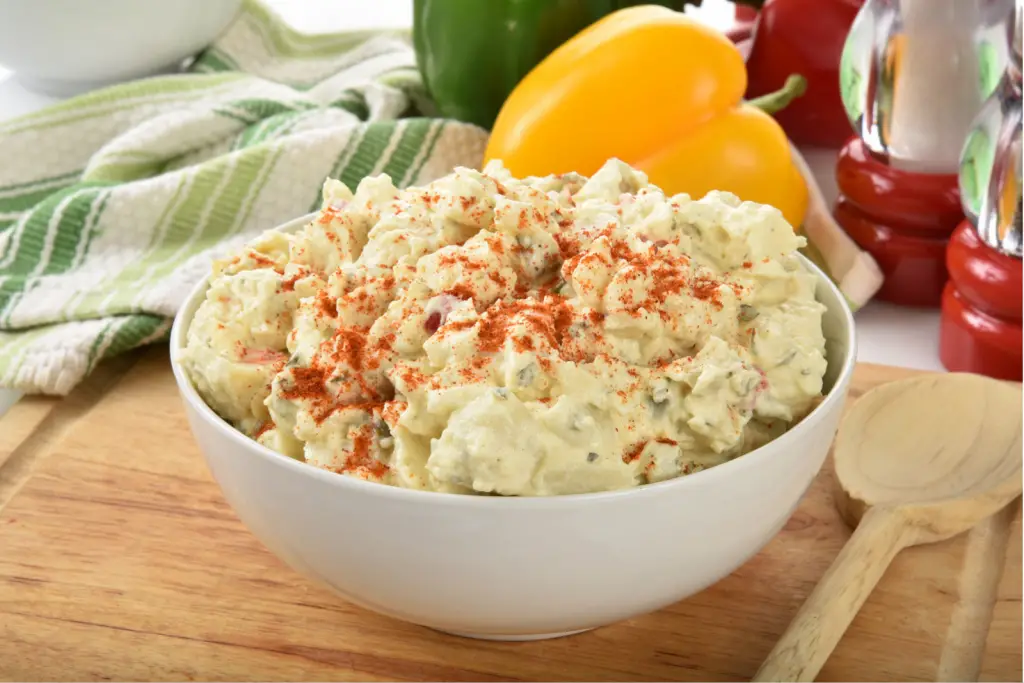
Chicken nuggets, those irresistible bite-sized pieces of breaded and fried chicken, are a beloved snack or meal option enjoyed by both kids and adults alike. With their crispy exterior and juicy interior, chicken nuggets offer a satisfying and flavorful experience. Whether you’re serving them as a quick and convenient lunch, a party appetizer, or a fun dinner option, chicken nuggets are always a hit. However, if you have a large batch of chicken nuggets or want to prepare them in advance for future meals, freezing is an excellent method of preservation. Freezing chicken nuggets allows you to maintain their quality, ensuring that they retain their crispy texture and delicious taste. In this guide, we will explore the steps to properly freeze chicken nuggets, from preparation to storage, so you can enjoy these tasty treats at any time. Join us as we embark on the journey of freezing chicken nuggets and discover the convenience of having them readily available for a quick and satisfying meal.
Here are the simple steps to freeze chicken nuggets:
Step 1: Select your Chicken Nuggets
Choosing the right chicken nuggets is an important first step in the freezing process. Whether you prefer store-bought or homemade chicken nuggets, here’s why it’s crucial to consider their freshness and expiration date:
- Quality assurance: Freshness plays a significant role in the overall taste and texture of chicken nuggets. Selecting fresh nuggets ensures that you’ll have a delicious and satisfying meal when you decide to enjoy them later.
- Expiration date: Always check the expiration date on the packaging of store-bought chicken nuggets. Exceeding the expiration date can lead to spoilage and compromise the safety and quality of the nuggets. If preparing homemade nuggets, take note of the date they were cooked and frozen to keep track of their freshness.
- Safety concerns: Eating expired or spoiled chicken nuggets can pose health risks due to bacterial growth. It’s important to prioritize food safety and avoid consuming any nuggets that have exceeded their expiration date or show signs of spoilage, such as a foul odor or unusual texture.
- Personal preference: Consider your taste preferences when choosing chicken nuggets. Some brands offer different flavors or varieties, such as spicy, breaded, or grilled options. Homemade nuggets allow you to customize the seasoning and ingredients according to your liking.
By selecting fresh and unexpired chicken nuggets, you ensure that the freezing process preserves their quality and taste. Whether you opt for a trusted brand or decide to make your own, this step sets the foundation for a satisfying frozen chicken nugget experience.
Step 2: Prepare the Nuggets for Freezing
Properly preparing the chicken nuggets before freezing them is essential for convenience and ease of use when it’s time to enjoy them. If the nuggets are not already individually portioned, follow this guide to separate them into desired serving sizes:
- Thawing convenience: By separating the chicken nuggets into individual portions before freezing, you can easily thaw and reheat only the amount you need for a particular meal. This eliminates the need to thaw and refreeze the entire batch, which can affect the quality and texture of the nuggets.
- Portion control: Separating the nuggets into serving sizes helps with portion control, especially if you’re conscious of your dietary intake. It allows you to have better control over the number of nuggets you consume and can be particularly useful for managing portion sizes for children.
- Customization: Individual portioning allows for customization according to personal preferences or specific dietary requirements. For example, you can separate the nuggets into different sizes for adults and children or customize the portions based on the desired number of nuggets per serving.
To prepare the nuggets for freezing, follow these steps:
- If the nuggets are stuck together, gently separate them using a fork or your fingers. Be careful not to crush or break them.
- Decide on the desired serving size for each portion. This can vary depending on personal preference or the number of people you plan to serve.
- Place the separated nuggets onto a baking sheet or tray lined with parchment paper or aluminum foil. Ensure that they are evenly spaced and not touching each other to prevent them from sticking together during freezing.
- If you prefer to keep the nuggets in their original packaging, consider inserting small pieces of parchment paper between them to prevent sticking.
By taking the time to individually portion the chicken nuggets before freezing, you’ll have greater convenience, portion control, and flexibility when it comes to enjoying them later.
Step 3: Arrange the Nuggets on a Baking Sheet
Properly arranging the chicken nuggets on a baking sheet before freezing helps ensure that they maintain their individual shape and prevent them from sticking together. Follow this guide explanation to arrange the nuggets for optimal freezing:
- Even freezing: Placing the chicken nuggets in a single layer on a baking sheet allows for even freezing. This ensures that each nugget freezes at a consistent rate, preserving their texture and taste.
- Prevention of sticking: By making sure the chicken nuggets do not touch each other on the baking sheet, you prevent them from sticking together during the freezing process. This makes it easier to separate and thaw individual nuggets when you’re ready to cook or reheat them.
- Use of lining: It is recommended to line the baking sheet with parchment paper or aluminum foil to prevent the nuggets from sticking to the surface. This also makes it easier to remove the frozen nuggets from the baking sheet without any hassle.
To arrange the chicken nuggets on a baking sheet, follow these steps:
- Prepare a baking sheet by lining it with parchment paper or aluminum foil. This prevents the nuggets from sticking to the surface and facilitates easy removal.
- Take the individually portioned chicken nuggets and place them on the lined baking sheet. Ensure they are spaced apart, with a small gap between each nugget.
- Continue placing the nuggets in a single layer until the baking sheet is filled. If you have more nuggets than can fit on one baking sheet, you can use additional lined sheets or freeze them in batches.
- If you have a large quantity of nuggets to freeze and limited space, you can stack multiple layers of baking sheets, making sure to separate each layer with parchment paper or aluminum foil.
By arranging the chicken nuggets in a single layer, with proper spacing on a lined baking sheet, you ensure that they freeze individually and stay separate from one another. This step contributes to easier handling and thawing of the nuggets when you’re ready to cook or serve them.
Step 4: Pre-Freeze the Nuggets
Pre-freezing the chicken nuggets on the baking sheet before transferring them to storage containers or bags is a crucial step known as flash-freezing. This process helps prevent the nuggets from clumping together and allows for easier portioning and handling in the future. Here’s an explanation of why and how to pre-freeze the nuggets:
- Prevent clumping: Placing the baking sheet with the arranged chicken nuggets in the freezer for a short period of time allows the surface of the nuggets to freeze quickly. This rapid freezing prevents them from sticking to each other, reducing the chances of clumping together into a solid mass.
- Easy portioning: Flash-freezing individual chicken nuggets ensures that they remain separate and can be easily portioned according to your needs. This way, you can take out only the desired amount of nuggets from the freezer without thawing the entire batch.
- Preserve quality: Flash-freezing helps preserve the quality of the chicken nuggets by minimizing the formation of ice crystals and preventing moisture loss. This process helps maintain the texture, flavor, and overall integrity of the nuggets during freezing.
To pre-freeze the chicken nuggets, follow these steps:
- Once the chicken nuggets are arranged on the lined baking sheet, place the sheet in the freezer. Make sure the baking sheet is placed on a flat surface for stability.
- Allow the chicken nuggets to pre-freeze in the freezer for approximately 1 to 2 hours. The exact time may vary depending on the thickness and size of the nuggets.
- Monitor the nuggets while pre-freezing to ensure they are solid but not fully frozen. They should be firm to the touch and hold their shape.
- Once the pre-freezing time is complete, remove the baking sheet from the freezer. The chicken nuggets are now ready to be transferred to storage containers or bags for long-term freezing.
By pre-freezing the chicken nuggets on the baking sheet, you prevent them from clumping together, making it easier to portion and use the desired quantity later on. This step contributes to maintaining the quality and convenience of the frozen chicken nuggets.
Step 5: Transfer to Freezer-Safe Containers or Bags
After pre-freezing the chicken nuggets on the baking sheet, it’s time to transfer them into freezer-safe containers or resealable plastic bags. This step is important for long-term storage and helps maintain the quality and freshness of the nuggets. Here’s an explanation of why and how to transfer the pre-frozen nuggets:
- Protection from freezer burn: Freezer-safe containers or bags provide a protective barrier against freezer burn, which can affect the texture and taste of frozen foods over time. Proper packaging helps maintain the quality of the chicken nuggets during their stay in the freezer.
- Space optimization: Transferring the nuggets into containers or bags allows for better space utilization in the freezer. Containers can be stacked, while bags can be organized in a way that maximizes the available freezer space. This ensures efficient storage and easy access to the nuggets.
- Excess air removal: When using resealable plastic bags, it’s important to press out any excess air before sealing them tightly. Removing as much air as possible minimizes the risk of freezer burn and helps maintain the quality of the chicken nuggets by reducing the exposure to oxygen.
To transfer the pre-frozen chicken nuggets to freezer-safe containers or bags, follow these steps:
- Remove the baking sheet with the pre-frozen chicken nuggets from the freezer.
- Carefully lift each nugget from the baking sheet, ensuring they don’t stick to the surface. Use a spatula or your fingers to gently lift and transfer the nuggets.
- If using containers, place the chicken nuggets in a single layer, leaving a little space between each nugget. If using bags, carefully slide the chicken nuggets into the bag, arranging them in a flat, single layer.
- If using resealable plastic bags, press out as much air as possible before sealing them tightly. This minimizes the chances of freezer burn and helps maintain the quality of the nuggets.
- If using containers, ensure they have a tight seal to prevent air exposure. Label the containers or bags with the date of freezing for future reference.
By transferring the pre-frozen chicken nuggets to freezer-safe containers or bags, you protect them from freezer burn and optimize storage space. Proper packaging helps maintain the quality and freshness of the nuggets, ensuring they’re ready to be enjoyed whenever you need them.
Step 6: Label and Date the Packages
Labeling and dating the packages containing the frozen chicken nuggets is an important step to help you keep track of their contents and freezing time. By using a permanent marker to label each container or bag, you ensure easy identification and promote proper rotation of the frozen nuggets. Here’s an explanation of why and how to label and date the packages:
- Content identification: Labeling the packages with the contents allows you to quickly identify them without needing to open each container or bag. This is especially useful when you have different types of chicken nuggets or other frozen foods stored in the freezer.
- Freezing time tracking: By dating the packages, you establish a reference point for the freezing time. This information helps you ensure that the chicken nuggets are consumed within a reasonable timeframe to maintain their quality. It also allows you to prioritize the older batches of nuggets to be used first, reducing the risk of freezer burn or waste.
- Organization and inventory management: Properly labeled packages contribute to an organized freezer and efficient inventory management. You can easily locate and access the chicken nuggets you desire, ensuring a smooth cooking or reheating process.
To label and date the packages containing the frozen chicken nuggets, follow these steps:
- Use a permanent marker to write the contents of the package, such as “Chicken Nuggets,” on the container or bag. Make sure the label is clear and visible.
- Write the date of freezing on the package next to the contents. Include the month, day, and year for accurate tracking. For example, write “Frozen on DD/MM/YYYY” or “Expire by DD/MM/YYYY” to indicate the recommended consumption timeframe.
- If you have multiple packages of chicken nuggets with different freezing dates, label each package accordingly to ensure proper rotation and consumption.
- Place the labeled packages back in the freezer, arranging them in a way that allows for easy visibility and access.
By labeling and dating the packages of frozen chicken nuggets, you promote organization, tracking, and proper consumption management. This step ensures that you can identify and use the nuggets within their optimal quality period while maintaining an orderly freezer.
Step 7: Store in the Freezer
Proper storage of the labeled chicken nuggets in the freezer is crucial for maintaining their quality and preventing any damage. Follow this explanation to ensure the optimal storage of your frozen chicken nuggets:
- Maximizing space: Arrange the labeled chicken nuggets in a way that maximizes the use of freezer space. Consider stacking the containers or placing the bags in a flat position, making sure they are stable and won’t topple over. Utilize the available space efficiently to make room for other frozen items.
- Prevention of crushing or damage: Take care to prevent the chicken nuggets from being crushed or damaged during storage. Avoid placing heavy items on top of the containers or bags to protect the nuggets’ shape and texture. If stacking containers, make sure they are stable and won’t collapse.
- Consistent cold temperature: Choose a section of the freezer that maintains a consistently cold temperature. Fluctuating temperatures can negatively affect the quality of the frozen chicken nuggets. Avoid storing them near the freezer door or in areas prone to temperature fluctuations, such as near the freezer vents.
To store the labeled chicken nuggets in the freezer, follow these steps:
- Open the freezer and identify a suitable area where the temperature remains consistently cold.
- Arrange the labeled containers or bags of chicken nuggets, making sure they are placed in a way that maximizes space and stability.
- If stacking containers, ensure they are well-balanced and won’t topple over. Place heavier items at the bottom and lighter items on top.
- If using resealable plastic bags, consider placing them in a flat position to save space and prevent them from getting tangled.
- Close the freezer door gently to avoid disturbing the position of the chicken nuggets.
By properly storing the labeled chicken nuggets in the freezer, you ensure their longevity and preserve their quality. Proper arrangement and temperature control contribute to maintaining their taste, texture, and overall integrity until you’re ready to enjoy them.
How long can chicken nuggets last in the freezer?
Chicken nuggets can last in the freezer for approximately 1 to 3 months while maintaining good quality. However, for the best taste and texture, it is recommended to consume them within the first month of freezing. Proper packaging, labeling, and storage conditions are essential to ensure the longevity and quality of frozen chicken nuggets.
Other related questions
How do you defrost chicken nuggets?
There are three recommended methods for defrosting chicken nuggets. The first is to thaw them in the refrigerator by placing them in a covered container overnight. The second option is to use the defrost setting on a microwave, ensuring to follow the manufacturer’s instructions and rotating the nuggets periodically. The third method involves cooking the frozen nuggets directly in the oven, adjusting the cooking time to allow for thorough heating.
Can you refreeze chicken nuggets?
It is generally safe to refreeze chicken nuggets if they have been thawed properly and handled safely. However, it is recommended to avoid multiple cycles of freezing and thawing, as this can affect the quality and texture of the nuggets. To maintain the best taste and texture, it is advisable to consume the thawed chicken nuggets within a reasonable timeframe and avoid refreezing whenever possible.
How do I know if the chicken nuggets have gone bad after being frozen?
After being frozen, if chicken nuggets have gone bad, there are several signs to look for. These include a noticeable change in color, such as darkening or discoloration, an off or unpleasant odor, or a slimy texture. If you observe any of these indicators, it is best to discard the chicken nuggets to avoid the risk of foodborne illness. It’s important to always prioritize food safety and trust your senses when evaluating the quality of frozen chicken nuggets.
Is it possible to freeze chicken nuggets with different dipping sauces?
While it is possible to freeze chicken nuggets with different dipping sauces, it’s important to consider the sauce’s compatibility with the freezing process. Some sauces may separate or change in texture after freezing and thawing. It is recommended to freeze the chicken nuggets separately from the dipping sauce, and add the sauce after reheating the nuggets to ensure optimal taste and texture.
Why are my frozen chicken nuggets soggy?
Soggy frozen chicken nuggets can be a result of moisture retention during the freezing process or improper storage. The nuggets may have been frozen without pre-freezing them individually, causing them to clump together and trap moisture. Additionally, inadequate packaging or exposure to air can contribute to moisture buildup, leading to a soggy texture when thawed and reheated.








